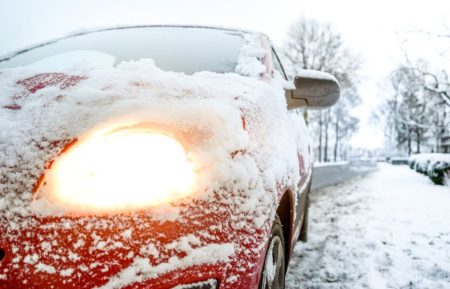
Driving in the winter can be challenging and terrifying as winter driving will test even the most attentive and skilled driver especially if you are a survivor of a motor vehicle crash. Heavy snowfall can reduce visibility and slippery road conditions can certainly test you. Safest winter driving requires patience and preparation.
Whether you are driving or a passenger in a vehicle, here are some tips for winter driving:
- Clear snow and ice off of your vehicle’s hood, roof, windows, headlights and tail lights before you drive. Your visibility will improve dramatically and other drivers will not be put at risk with snow or ice being thrown onto their vehicle that can become airborne when you drive. If the snow or ice hits another car’s windshield and the driver of that car gets in a crash, you could be found responsible;
- If you are expecting frigid temperatures to come, it is important to have the right windshield washer fluid to get the job done. Use winter grade windshield cleaner as it is specifically formulated to stay fluid even in the coldest weather. Slick roads are often treated with a salty solution, sand crystals and/or sand to provide traction. Having the proper fluid is important;
- Check the condition of your wiper blades to make sure they are in good condition for colder weather. You can also switch to winter wiper blades which are designed for cold and winter conditions;
- Keep an eye on your tire pressure. Fluctuating temperatures can cause your tires to expand and contract leading to loss of tire pressure;
- Change to winter tires. The best time to install your winter tires is before the temperature drops below 7 C, or before the first snowfall. Many motorists install winter tires in October to avoid the rush on service departments after the first snowfall. Try and make it an annual routine;
- Dress for warmth as cold temperatures can lead to frostbite and hypothermia. You never know if you may be delayed due to driving conditions;
- If you are a passenger in a vehicle, be honest and upfront with the driver on how you are feeling and explain to the driver that you may have limitations due to chronic pain, fatigue or sudden flashbacks;
- Keep your gas tank filled at least to half to avoid emergencies in bad weather;
- Do not pass snow plows. The road is likely more treacherous in front on these trucks and you could run the risk of sliding as you accelerate to pass them. Do not follow too closely as you may end up with a cracked windshield from flying pebbles;
- Find your vehicle stuck on the ice? In a pinch, you can take the mats out of your car, place them next to your tires and slowly inch the car onto and across the mats. Give yourself plenty of room to come to a complete stop at intersections and when following other vehicles;
- Slow down when taking corners, especially on blind corners where you don’t know what’s ahead. TAKE YOUR TIME!
Emergencies on the road can be extra dangerous and stressful in winter weather. Preparing a winter safety kit could prove to be quite beneficial. Here’s what to include in your winter safety kit:
- Cell phone along with car charger that is placed in the glove compartment while driving.
- First Aid Kit including bandages, gauze pads and medical tape.
- Flares: make sure they are kept dry and out of the reach of children. Also check the expiry date.
- Water and non perishable foods such as granola or protein bars.
- Flashlight with extra batteries.
- A Blanket.
- Extra windshield fluid.
- Snow brush and ice scraper.
By practicing driving precautions in winter weather and making sure your car is winterized, you can reduce your exposure to driving dangers and the risk of weather-related motor vehicle crash.
Dawne McKay is a survivor of a horrific crash that changed her life forever and her advocacy continued in 2018 as she became a Crash Survivor Blogger. Dawne is also the author of the book, “Talk Crash to Me – What to Expect After Surviving a Collision and How to Manage Your Recovery” which is available for purchase on Amazon.
The Crash Support Network is a unique website consisting of an online support group, a Crash Survivor Blog written by a survivor, our Sharing Our Recovery Newsletter, informative articles and a Virtual Crash Memorial. Our website is based on relationship-building and puts the needs of survivors first by creating a helpful resource for victims and survivors of motor vehicle crashes.



